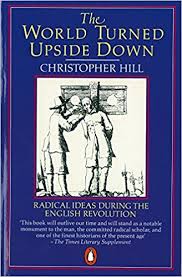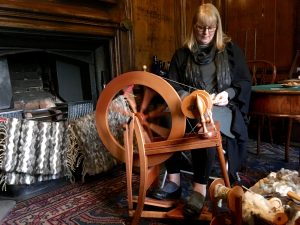I have been undertaking research for this play for many years. Long before I knew I was going to write it. The English Civil War has always interested me. As a subject it is insufficiently taught and dramatized for its importance, not because of its bloodshed which was immense but because of its unfinished business. As soon as we applied for funding, I went back to the books starting with Christopher Hill’s highly influential The World Turned Upside Down first published in 1972. Its contentions are still popular though no longer mainstream, that the Civil War was essentially a revolution inspired by political ideas and economic forces.
Hill’s book and his essays on Puritanism and Revolution are indispensable but they are not the whole story and since his heyday the barometer among historians has swung towards the conflict interpreted much more as a religious war, the final act of the Reformation. The important question, particularly for a playwright is what were the belligerents saying at the time? Enter stage right Tristram Hunt wielding The English Civil War At First Hand. Hunt populates the chronology with testimonies from people of either side. For a wide-angle big picture there is Peter Ackroyd’s Civil War which puts Scotland in the frame for the causes and conduct of the conflict. If I had another six-months I might get to finish Michael Braddick’s God’s Fury, England’s Fire which is remarkable for its intellectual breadth. For the local impact of the war I have visited Halifax library’s archive and was handed the Antiquarian Society Records from 1909 to 1911. These were I think also sourced by David Shires for his book The Halifax Cavaliers and the Heptonstall Roundheads.
Above, Julie Turner spinning yarn.



